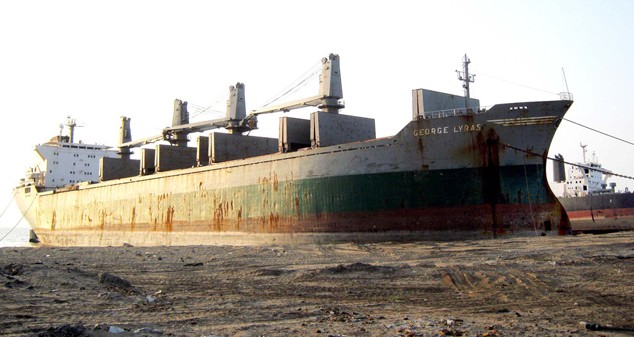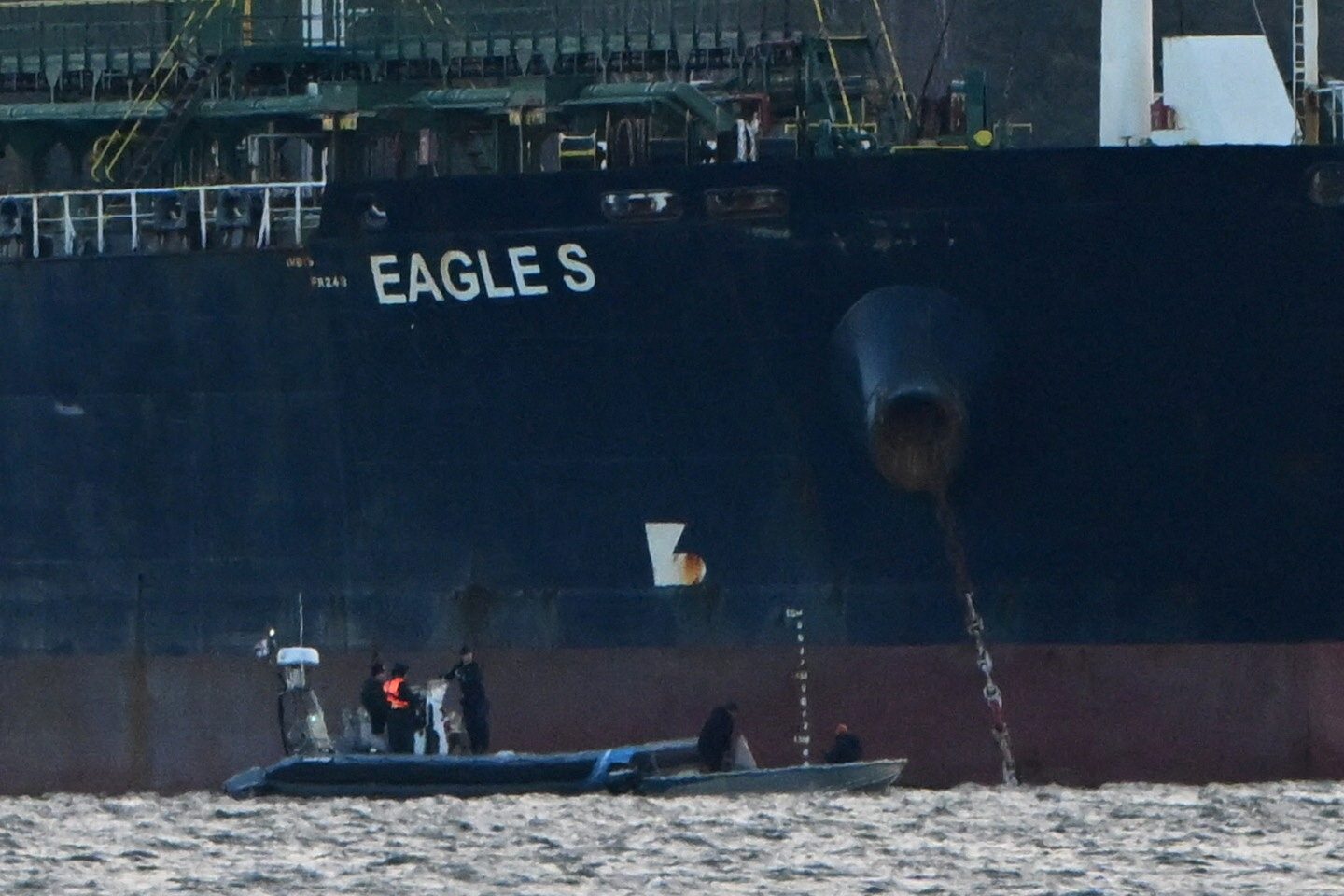(Bloomberg) — Scrap prices for dry-bulk ships have plunged 13 percent in the past year as oversupply and unprofitable charter rates prompt owners to demolish vessels at a record pace.
Shipbreakers paid about $425 a ton for commodity carriers last month, compared with $490 a year earlier, based on Clarkson Plc data. The tonnage sold in the first half rose 25 percent from a year earlier to 16.2 million tons, according to Clarkson, the world’s biggest shipbroker.
A 34 percent surge in fuel prices over the past two years has spurred scrapping as older vessels tend to consume more oil than newer ones. Prices have been further cut by the rupee’s plunge in the past year, the worst among Asian currencies. India vies with China as the world’s largest market for shipbreaking.
“Owners haven’t got any option other than to scrap,” said Darren Lepper, a sales and purchase specialist at the London- based shipbroker. “It can definitely be deemed as a buyer’s market.”
Panamax vessels, the largest to transit the Panama Canal, have led the jump in scrapping with 56 sold for demolition in the first half compared with 38 a year earlier, according to Clarkson. The tonnage sold has risen 33 percent to 3.37 million tons.
Older vessels “just cost too much” to operate, said Jayendu Krishna, a senior manager at Drewry Maritime Services in Singapore. “It’s better for the shipping company to scrap” as such ships are also unlikely to comply with current regulations for ballast water and carbon emissions.
Panamax Ships
The surge in scrapping hasn’t revived charter rates as 192 new Panamax ships were delivered in the first half, according to Clarkson. The total fleet stood at 2,163 at the start of July. Another 767 Panamax ships are also on order.
That glut has caused rates for Panamax, which hold between 60,000 tons to 80,000 tons of cargo, to fall 28 percent to $9,252 a day this year, according to the Baltic Exchange in London. Panamax ships need to return $12,900 daily to break even and cover operating and finance costs, excluding fuel, according to Pareto Securities AS, an Oslo investment bank.
Freight forward agreements show rates no higher than $9,150 a day by the end of the year, according to data from Clarkson Securities Ltd.
The slump in rates may cause scrapping for all types of dry-bulk ships to reach about 32 million tons this year, said Nicolas Duran, head of department for sales & purchase and shipbuilding at Fearnleys Asia (Singapore) Pte.
New Tonnage
“Even with that number, it will still be very difficult to absorb the new tonnage which is coming,” he said. In the first half, 16.2 million tons of dry-bulk ships were sold for demolition, according to Clarkson. The full-year tally in 2011 was 23 million tons.
Shipowners are adding to the scrapping surge by selling younger vessels. The average age of dry-bulk ships being scrapped has dropped to 28.8 years from around 31.4 years in 2011, according to Citigroup Inc. Tokyo-based Mitsui O.S.K. Lines Ltd. said last month that it plans to start scrapping ships that are 15 years old rather than 23 years old. It intends to sell as many as 10 capesizes for demolition by March-end.
The glut of ships being demolished means transaction prices for dry bulk and other general cargo ships are likely to fluctuate between $350 and $450 per ton for the foreseeable future, said Jamie Dalzell, a Shanghai-based trader at Global Marketing Systems Inc., the world’s largest cash buyer of ships.
“I would be very surprised to see the numbers go up to $500 and beyond any time soon,” he said. If an owner rejects current prices “there’s always another owner just around the corner willing to sell,” he said.
Steel, Aluminum
Cash buyers purchase ships from owners and then resell them to demolition yards. The yards break the ships up and then sell materials such as steel, aluminum and copper, which are then recycled and used in industries such as construction.
Lower prices for steel because of China’s slower growth are squeezing shipbreakers’ margins even as they buy vessels more cheaply. Prices for hot-rolled coil, a benchmark product, fell 0.2 percent to 4,136 yuan ($650) a metric ton in China last month, the lowest since July 22, 2010, according to researcher Beijing Antaike Information Development Co.
Indian shipbreakers are also contending with the rupee’s 20 percent drop against the dollar, which has made vessel purchases more expensive in their local currency. The rupee has been the worst performer among 11 major Asian currencies tracked by Bloomberg in the past year as the nation’s slowing economic growth deterred overseas investments.
‘No Profits’
“Even if the volumes are high, the profits are not there,” said Abhinav Kumar, director of Ace Exim Pte., a shipbreaker in Alang, India. Scrapping prices generally rise later in the year following the end of the monsoon season.
Steel demand in China also increases in the second half because of seasonal factors, which may also help revive ship- scrapping prices, said Jimmy Ji, a vice director, at Taizhou Weiye Scrapping & Rolling Co., which breaks up ships in Jiangsu province, China.
Still, given the slump in charter rates and the looming supply of new ships, owners will continue selling vessels for demolition at whatever price they can get, said Fearnleys’ Duran.
“With the huge orderbook and fleet growth, freight rates will stay low,” he said. “As long as they do that, people will continue scrapping.”
-Alexandra Ho and Kyunghee Park, with assistance from Alaric Nightingale in London. Copyright 2012 Bloomberg
Unlock Exclusive Insights Today!
Join the gCaptain Club for curated content, insider opinions, and vibrant community discussions.

 Join The Club
Join The Club











